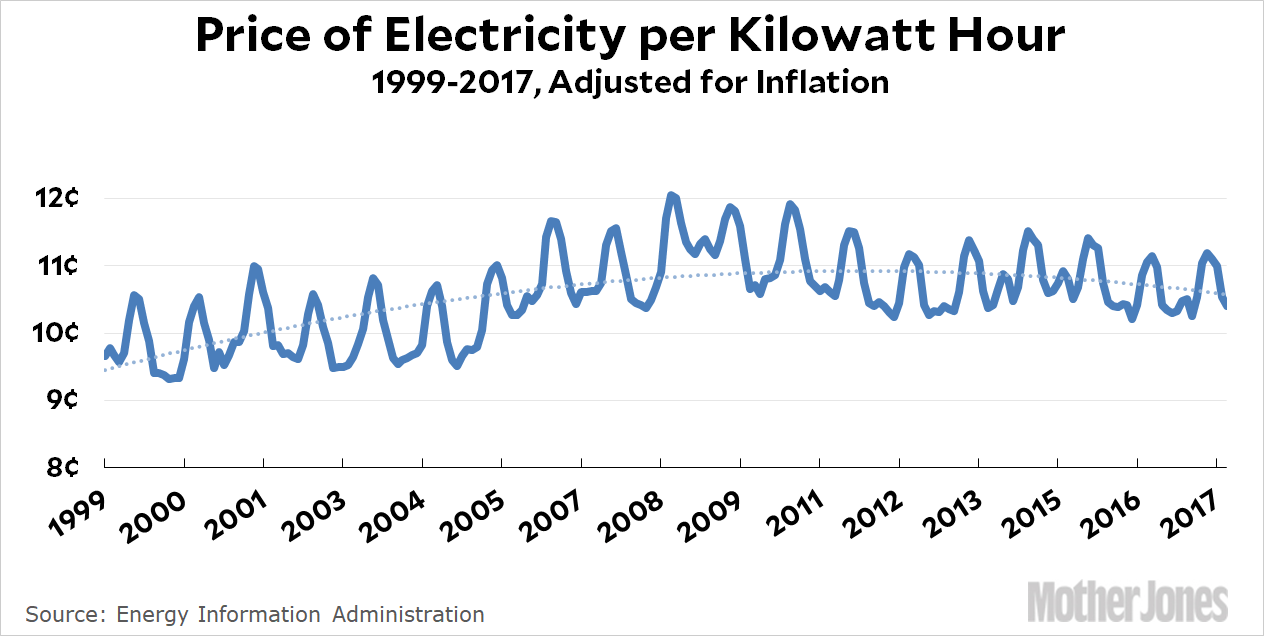Dave Roberts has an interesting piece today about the US demand for electricity. Thanks largely to rising energy efficiency and the emergence of rooftop solar, demand is flat, prices are down, and utilities are panicked. Here are three charts that tell the story. First, total end-use electricity demand since 1999:

Demand flattened starting in 2007 and is now showing signs of actually declining. Here’s the price of electricity:

The price of a kilowatt-hour of electricity has been dropping since about 2008. With demand flat and prices dropping, this means electric utilities are being squeezed. They make money by getting a regulated rate of return on new investment, but obviously they don’t need much new investment. They’ve squared this circle by simply building new capacity anyway. If they need to build more power plants in order to make money, then they’ll figure out some way to wheedle regulators into allowing them to build new power plants. Here’s the result:

Roberts explains what this means:
Utilities have been frantically adjusting to this new normal. The generation utilities that sell into wholesale electricity markets…have reacted by cutting costs and merging. The regulated utilities that administer local distribution grids have responded by increasing investments in those grids. But these are temporary, limited responses, not enough to stay in business in the face of long-term decline in demand. Ultimately, deeper reforms will be necessary.
….That’s simply a different model than current utilities are designed for. To adapt, the utility business model must change. Utilities need newly defined responsibilities and new ways to make money, through services rather than new hardware. That kind of reform will require regulators, politicians, and risky experiments.Very few states — New York, California, Massachusetts, a few others — have consciously set off down that path.
Paying utilities to build generating plants made a rough kind of sense when demand was steadily increasing and new plants were always on the horizon. Today it makes no sense at all. It’s time for regulators and state legislatures to change the way utilities are allowed to make money.
If charts are too bloodless for you, you should read a recent Los Angeles Times report about utilities in California. It explains in detail how utilities here continue to make billions of dollars building new power plants even though California has a glut of electricity. In fact, the glut is so massive that we’re even selling solar power to other states. And yet, the new plants just keep on coming.














